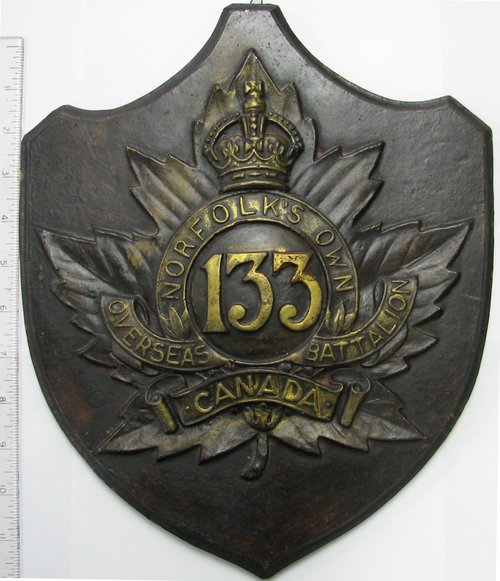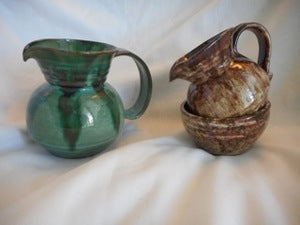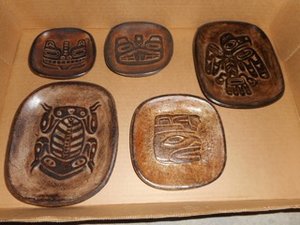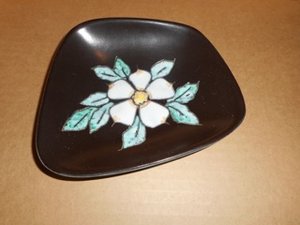Pictured throughout this page are a few treasures related to a couple regiments and battalions formed in Norfolk County. Since inception in 1792, Norfolk has had a proud and distinguished military history. It has been estimated that over 6,000 men and women have volunteered to serve the county and Canada in times of war: 1812-14, Fenian Raids, Boer War, the Great War right through to Afghanistan and present day. While each of these conflicts are significant and have had an impact on all involved, the Great War of 1914-1918 saw that first major losses; reaching virtually every community in Norfolk.
 |
As part of the Centennial Years of the Great War, the Norfolk Remembers Committee was formed to bring awareness of the many military contributions area soldiers and civilians have made throughout the 20th century. As an example, the committee dedicated a 3.6 km section of concession road in the hamlet of Rockford - the Rockford Road of Heroes. As author and historian Grant Smith suggests, “you could write a history of Canada at war from the exploits of the Rockford men” (visit www.norfolkremembers.ca for complete listings and history). |
The Rockford soldiers provide an interesting insight into the first major military force to be formed in the county – the 133rd (Norfolk’s Own) Canadian Expeditionary Force (see previous article posted on the Waterford Antique Market page). The 133rd C.E.F. formed for overseas service with soldiers being used as support with transfers to regiments like the Royal Montreal, the Central Ontario and the 123rd Pioneers. This meant that soldiers from Norfolk fought in nearly every major battle of the First World War – Vimy Ridge, Passchendaele, Amiens, Hill 70 through to the last 100 Days. It also meant significant losses for such a small community. By wars end, 255 men and 1 Nursing Sister had paid the supreme sacrifice.
|
Lt Col. Pratt |
 |
| Mementos in the form of sweetheart pins, handkerchiefs, postcards, panoramic photographs and “trench art” can be found from most every battalion of the Great War. While rare, items from the 133rd turn up in antique markets, at military shows and online. Prices, like most military items, have steadily increased over the last decade – a cap badge for the 133rd in reasonable condition brought $20 pre-2005. They are now listed for $75+. As seen in the picture, there are a few very slight variations and colours. Officers of the battalion wore silver badges which bring $250+. |  |




|
The 39th Norfolk Rifles was principally a typical Victorian militia force established September 28, 1866 (prior to 1866 the militia was known as the Norfolk Regiment). The 39th had companies in villages throughout the county. The large 39th helmet badge (pictured: center badge within the 39th badges) was purchased in 2004 for $195, they now bring $300+. The cabinet card photograph shows one of the officers of the 39th and was taken by a Simcoe photographer.
|
The “newest” badges featured on this page come from the Norfolk Regiment of Canada which was partnered with the Norfolk Regiment in Great Britain. For the most part, the badges pictured come from a uniform worn between 1931 and 1933. There are variations to these badges as well – the two small badges (known as collar dogs) have opposite facing beavers. The large badges with Britannia in the centre bring $95+. |





